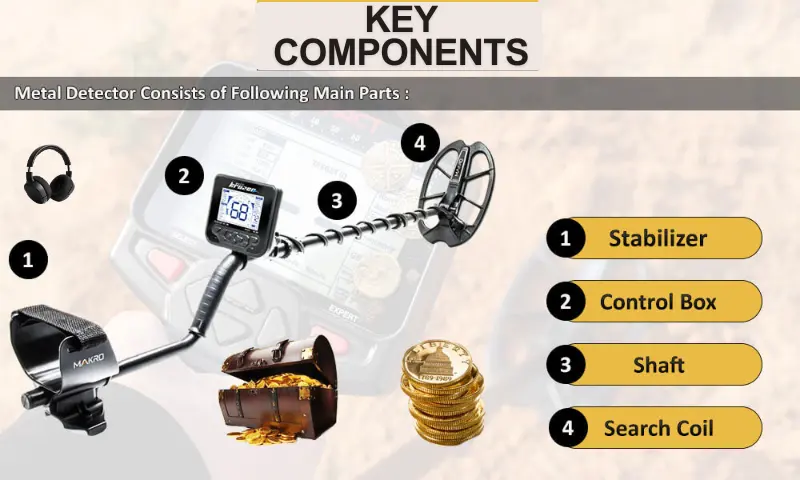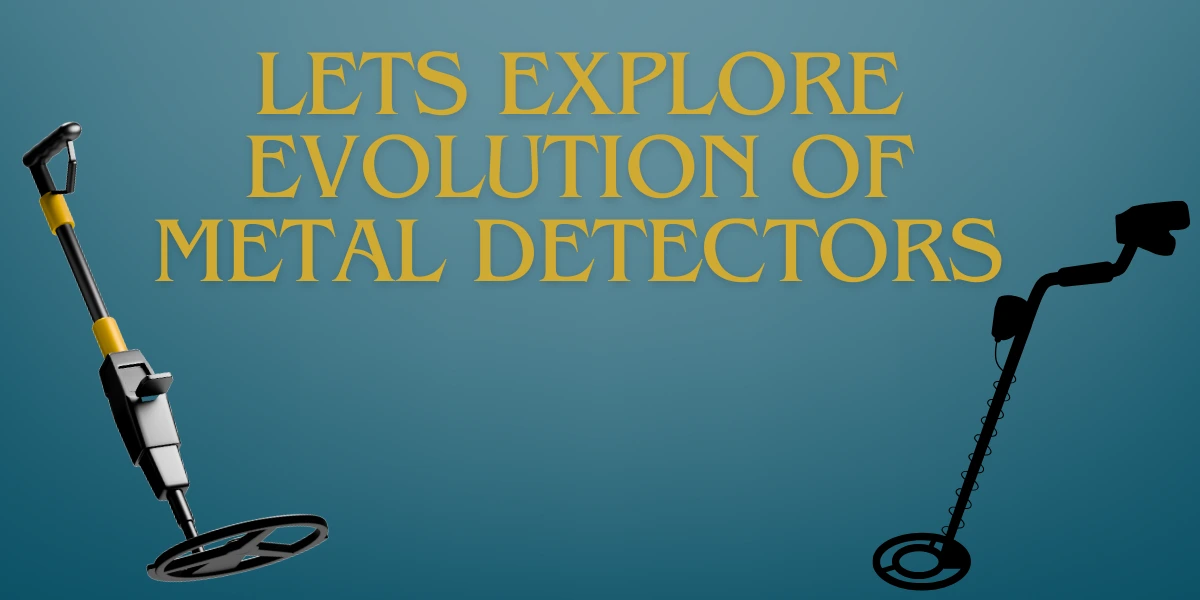Metal Detectors and Their Key Components
Published: 10 Sep 2024
Discovering hidden treasures is a healthy and exciting hobby. This can be challenging without knowing the metal detectors and their key components. In this blog post, I will explain metal detectors and their essential parts in detail, based on 10 years of experience in this field. Furthermore, I will share my experience with the necessary components you need to have for successful treasure hunting and the function of each tool. So, be with me; it’s going to be interesting.
What are Metal Detectors?
A metal detector is an electronic device used to find metal objects buried underground or hidden within other materials. It is the outcome of advancement in the field of science. Its use and importance are increasing day by day due to the use of these devices in multiple fields.
According to the Merriam-Webster dictionary, METAL DETECTOR is a device that detects the presence of hidden metal.
Oxford Dictionary: An electronic device that you use to look for metal objects that are buried under the ground.
The Physics Behind Metal Detectors?
Metal Detectors work on the principle of electromagnetic induction. In this technique, the detector’s coil emits an electromagnetic field that interacts with magnetic fields created by nearby metal objects. Consequently, the same message is received by the detector and this change produces a beep. This alerts the user and can be the lucky moment.
Utilization of Metal Detectors
Metal detectors are mainly utilized in the following areas:
- Security screening
- Treasure hunting
- Archaeological explorations
- Industrial applications
The essential components of a metal detector

1. Control Box
The control box can be rightly called the heart of the metal detector. This contains the place for the location of the electronic circuit, batteries, and the place of the buttons for users.
This is responsible for analyzing signals collected from the search coil and feeding back the information to the user. The information is mainly passed through audible signals and display lamps. Modern control boxes may be equipped with discrimination settings, target identification, or the depth of the object that is being detected.
2. Search Coil
The search coil, also known as the loop or the antenna, is a component of the metal detector used to sweep the ground in search of metallic objects.
It sends an electromagnetic field into the ground while the other receives the response field generated by metals. The coils can be of various forms and dimensions; therefore, they vary in depth penetration and resolution to the targets.
3. Shaft
The shaft is the long metallic rod that joins the search coil with the command box on the engineer’s side.
It enables the user to sweep the search coil on the ground with an upright posture. Many shafts can be adjusted to suit the users’ height, ensuring that they remain comfortable during use.
4. Stabilizer
The main function of a stabilizer in a metal detector is to help reduce interference and noise, making it easier to identify targets accurately.
It helps you identify your target precisely and accurately in challenging environments. Thus, it increases your chances of success and saves your time and energy.
5. Armrest
This armrest is close to the control box, and it helps the user to place his/her arm to swing the detector.
It provides comfort and makes metal detectors quite easy to use.
6. Headphones
Headphones may be connected to the metal detector, but it is not obligatory, though utilizing this equipment has many benefits.
They assist the user in’ listening’ signals better in such a venue and offer more detailed auditory information about the objects that have been spotted.
7. Battery Compartment
This is the part of the metal detector where batteries are usually stored in a pocket at the end of the scanner.
It powers the detector; some units even come with rechargeable batteries to save money and provide extra flexibility.
Interesting Facts and Figures About Metal Detectors
- Alexander Graham Bell invented the metal detector in 1881.
- Basically, it was made to locate a bullet in President James Garfield’s body after an assassination attempt.
- The global metal detector market is expected to reach around $1.6 billion in 2023.
- The advanced metal detectors can detect metals at 6 feet or even more depth.
- Staffordshire Hoard in 2009 discovered 3,500 gold and silver artifacts from the Anglo-Saxon era valued at around £3.28 million.
Frequently Asked Questions
What is the significance of a control box in a metal detector?
The control box is mandatory since it contains the circuits and batteries needed to perform the operations. It analyzes the signals from the search coil and returns to the operator parameters, such as the position, kind, and depth of the found metallic object.
Can I use any headphones with a metal detector?
Though most metal detectors come with a headphone jack, which means ordinary headphones can be connected, the actual headphones for metal detecting offer clearer sounds, do not allow outside noises to interfere, and provide more detailed audio of the detected objects.
What are the Essential Parts of a Metal Detector?
Following are some of the key components of a metal detector:
- Control Box
- Search Coil (Loop or Antenna)
- Shaft
- Stabilizer
- Armrest
- Headphones
- Battery Compartment
Concluding Remarks
Suppose a person is involved in hunting for treasures or in any activity that centers on searching for hidden metal objects. In that case, it is very important to understand the main features of a metal detector. A control box, search coil, shaft, stabilizer, armrest, headphones, and battery compartment are all significant components of the metal detector since each of these components guarantees the effectiveness and efficiency of the equipment. Thus, if you familiarize yourself with those components, you can improve your experience of using metal detectors effectively and make the right choice for a specific metal detector.

- Be Respectful
- Stay Relevant
- Stay Positive
- True Feedback
- Encourage Discussion
- Avoid Spamming
- No Fake News
- Don't Copy-Paste
- No Personal Attacks

- Be Respectful
- Stay Relevant
- Stay Positive
- True Feedback
- Encourage Discussion
- Avoid Spamming
- No Fake News
- Don't Copy-Paste
- No Personal Attacks





